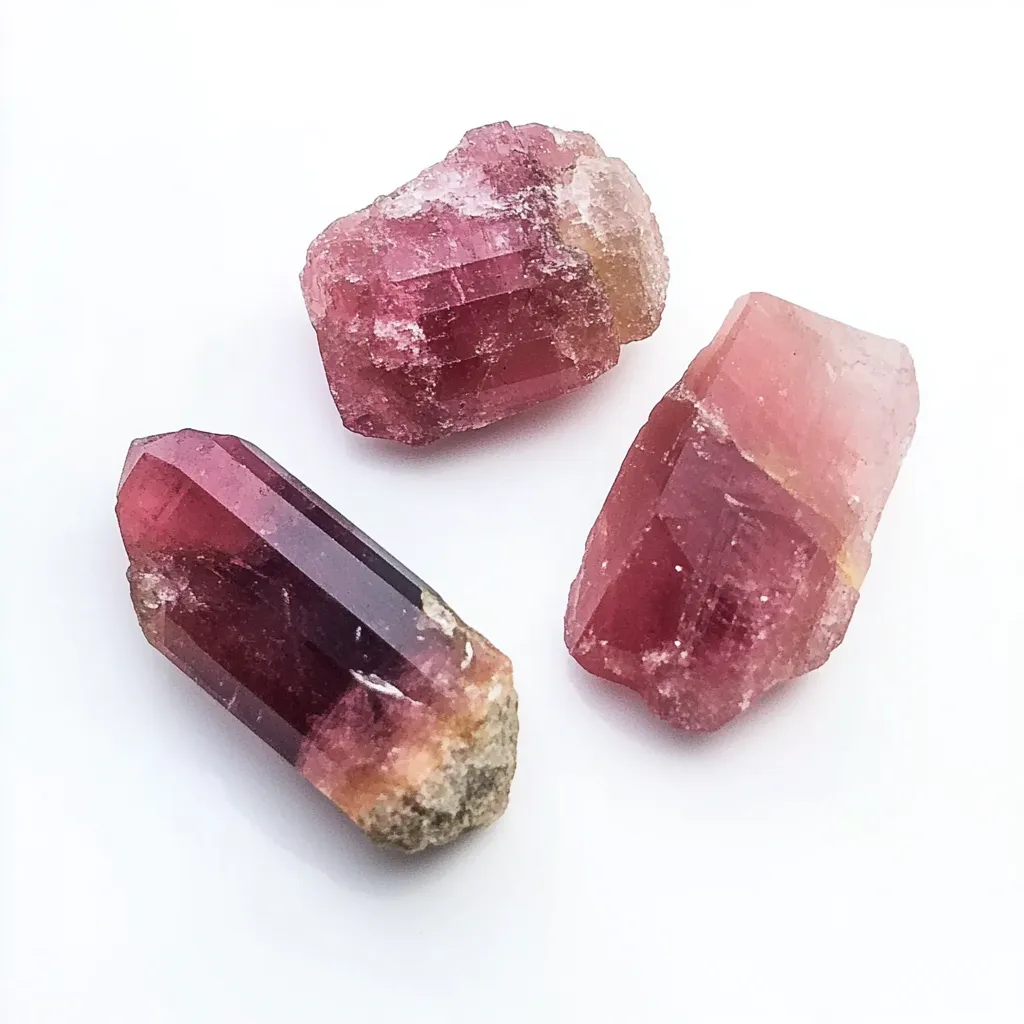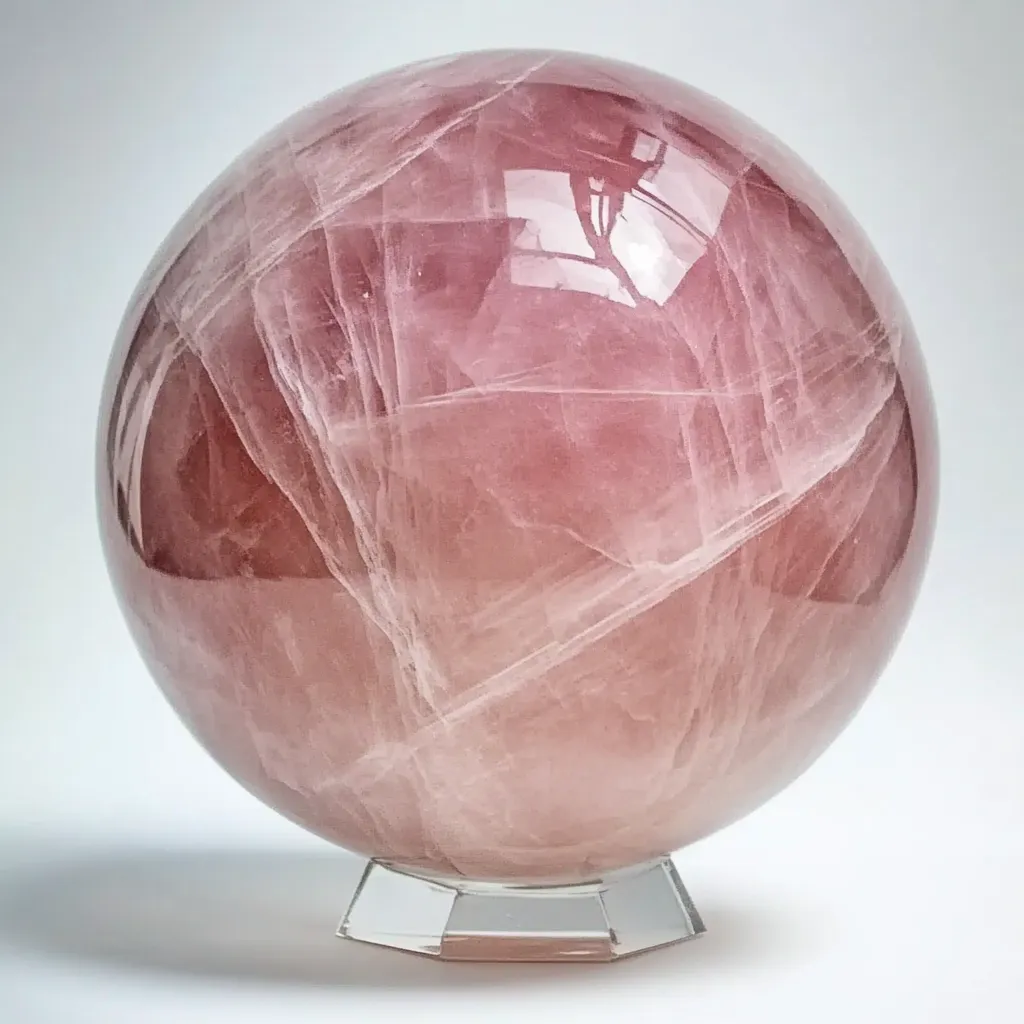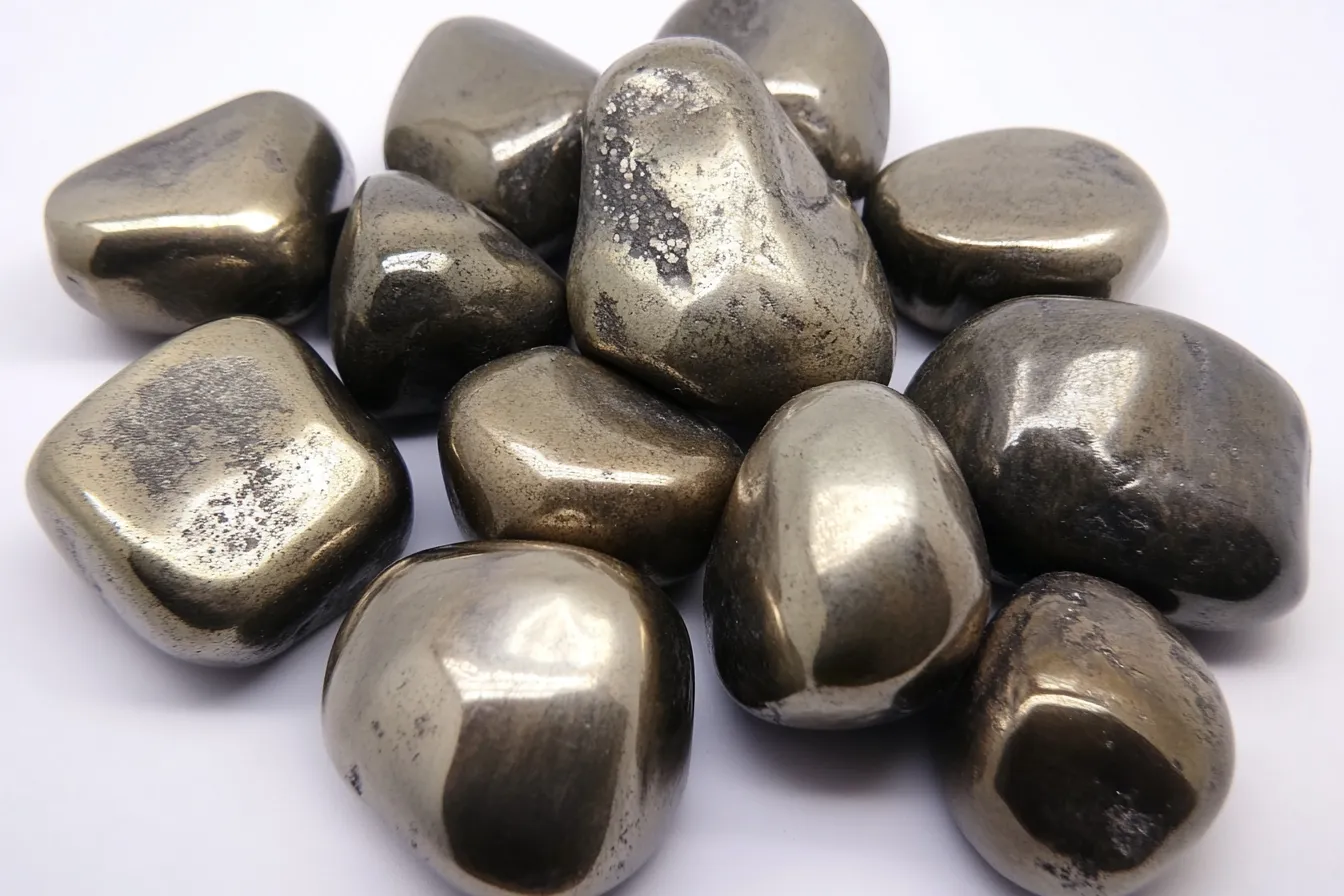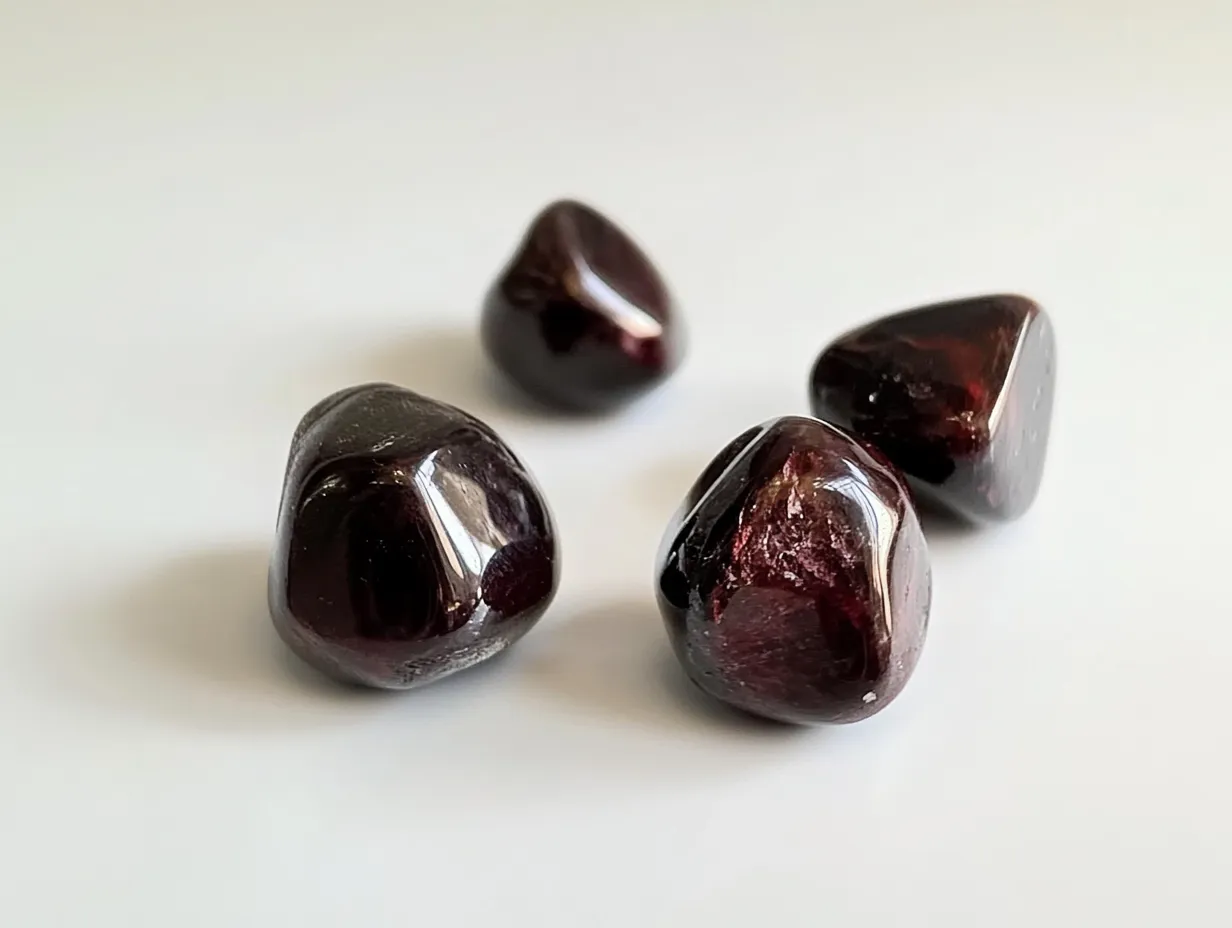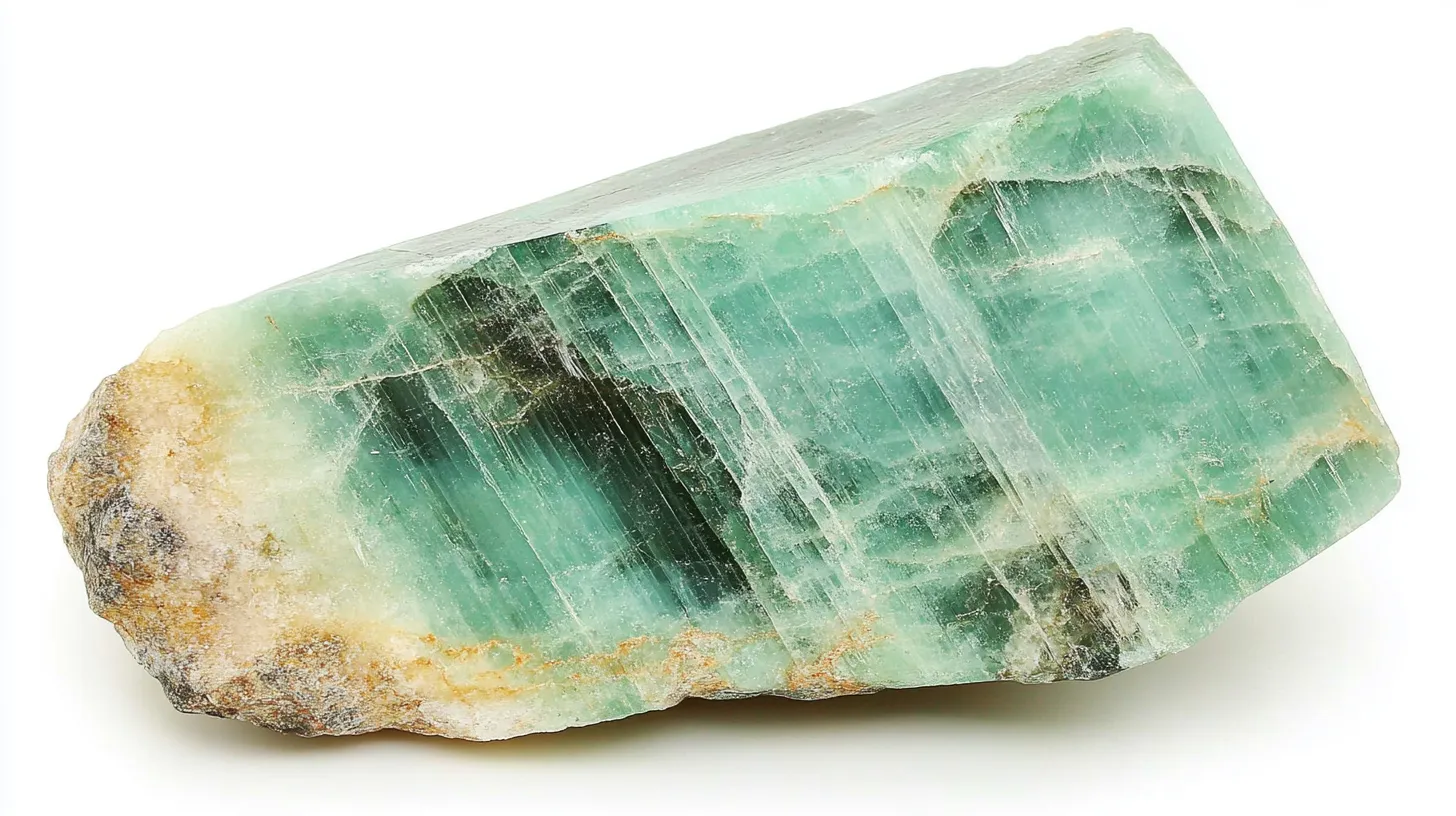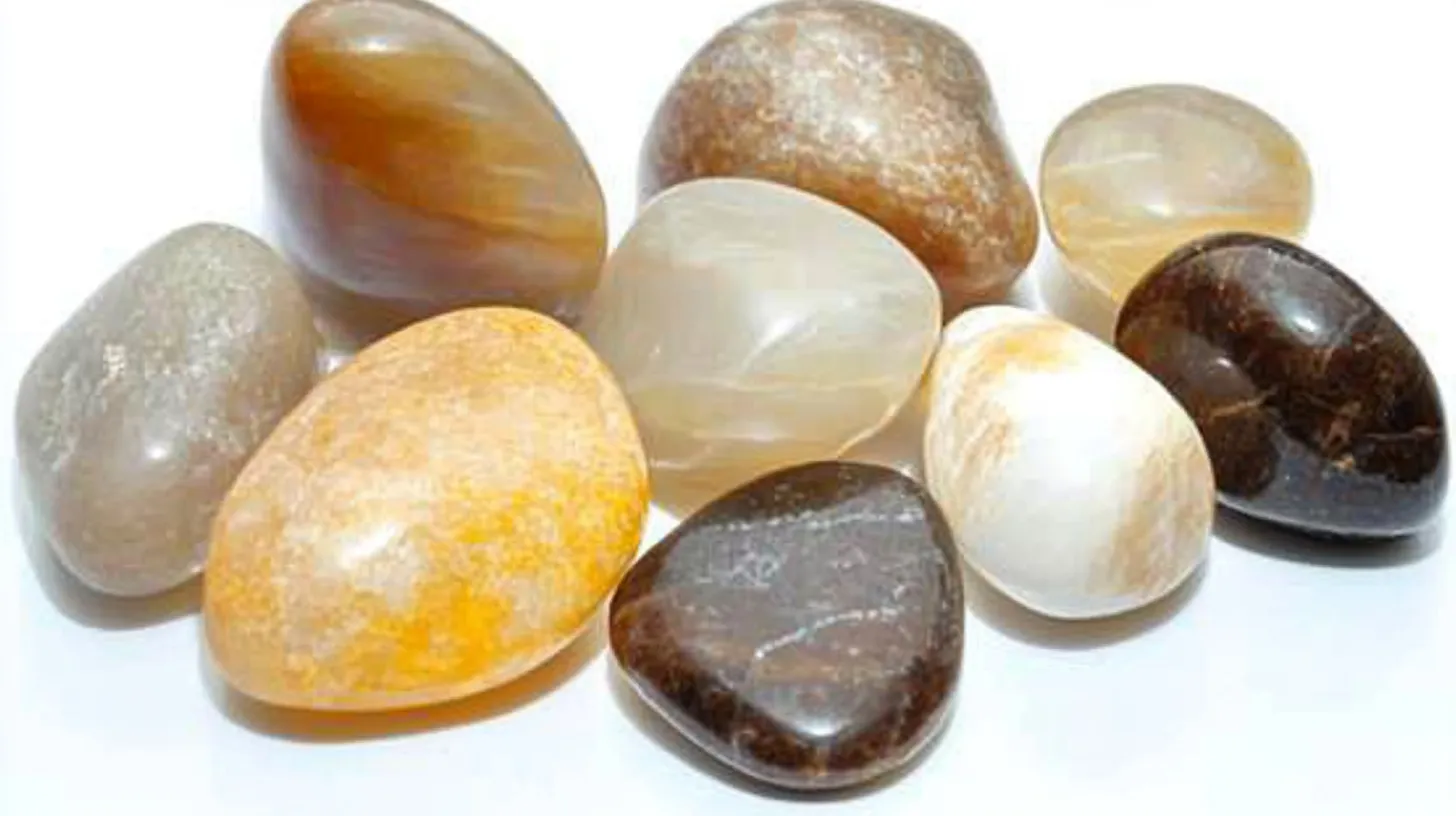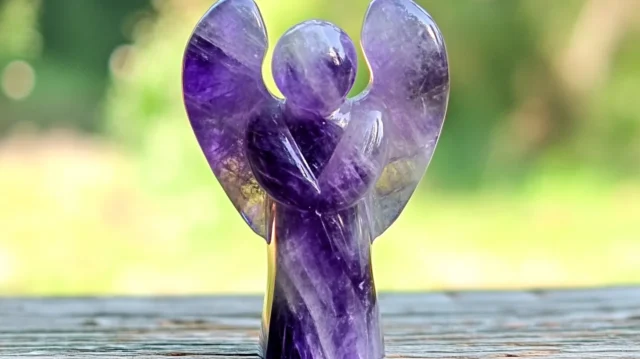

Scientific Information
Various quartz (SiO₂), amethyst, owes its signature purple color to trace amounts of iron and natural irradiation. It is part of the hexagonal crystal system and rates a solid 7 on the Mohs hardness scale, making it durable enough for everyday use in decorative and jewelry applications.
People commonly find it in geodes, particularly within volcanic rock. Its clarity and color, whose vibrancy can range from light lavender to deep violet, make it one of the world’s most beloved and instantly recognizable gemstones, especially when viewed in its cut and polished form.
Amethyst’s color can interestingly fade over time when subjected to strong sunlight. In fact, that’s one way gemologists find synthetics—natural amethysts almost never show uniform coloring.
Table: Key Scientific Properties of Amethyst
| Property | Description |
|---|---|
| Chemical Composition | Silicon Dioxide (SiO₂) |
| Crystal System | Hexagonal |
| Mohs Hardness | 7 |
| Color Variance | Light lavender to deep violet |
| Typical Form | Found in geodes within volcanic rock |
| Fading in Sunlight | Yes (can fade over time) |
| Clarity & Color Clues | Natural ones rarely have uniform coloration |

Geological Properties
Amethyst is found in both igneous and metamorphic rocks. It grows in cavities where mineral-rich fluids have crystallized slowly over thousands of years. The most distinguished deposits are in Brazil, Uruguay, Zambia, and Russia, but specimens of high quality have also been found in South Korea and throughout the United States (most famously in Arizona and North Carolina).
Clusters of crystals often grow to incredible sizes, exhibiting the same natural structure as smaller versions. Those cathedral-like amethyst geodes from Brazil can reach human height! This phenomenon gives rise to dramatic displays in crystal shops and museums.
What distinguishes one area’s amethyst from another? More often than not, it’s the tone and depth of the purple. For instance, reddish-tinted amethyst comes from Siberia, while amethyst from Zambia shows cooler violet-blue hues.
Table: Notable Amethyst Sources and Characteristics
| Location | Notable Traits of Amethyst |
|---|---|
| Brazil | Large cathedral geodes, vibrant purple |
| Uruguay | Deep color saturation |
| Zambia | Cool violet-blue tones |
| Russia (Siberia) | Reddish tints |
| USA (AZ & NC) | High-quality, diverse crystal formations |
| South Korea | Less common, but high-grade material found |
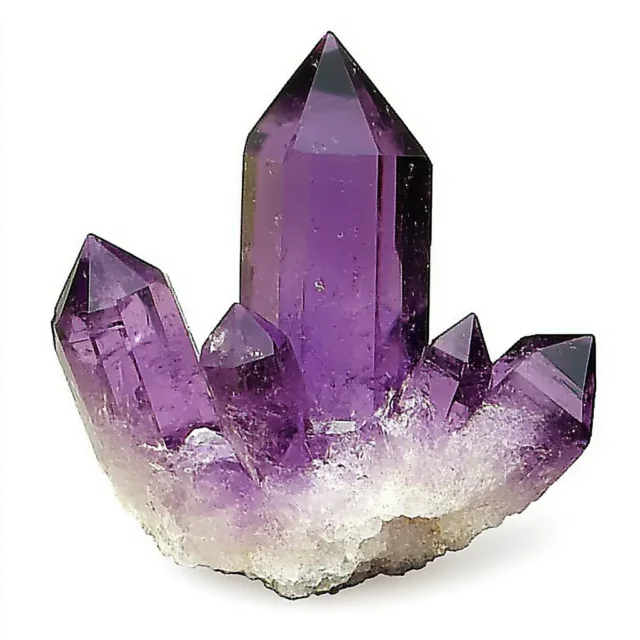
The Symbolism of Amethyst Crystal
For hundreds of years, people have viewed amethyst as a symbol of clarity, balance, and protection. Its name derives from the ancient Greek word that means “not intoxicated.” The Greeks wore amethyst amulets to protect both themselves and their minds from the effects of too much wine. But their fondness for amethyst went well beyond its purported power to keep them sober. For centuries, the purple quartz was viewed almost universally as a gem of high rank.
I recall going to an island shop in Greece where the owner insisted that I put on this amethyst ring during less-than-cool moments. She tapped her temple and flared her nostrils, as if to say, “Don’t lose your cool now, lady!” “Keeps the head cool,” she said. Oddly enough, I still wear it.
Currently, a large number of people link amethyst to the sphere of spirituality and consider it a vehicle for fostering growth in that direction. They consider it to be a crystal that can help one become more clear and decisive in the mental realm but also more calm and collected on the emotional front.

Healing Properties
Though science has not validated the metaphysical qualities associated with amethyst, this gemstone has long been an integral part of healing traditions. Proponents of crystal healing often recommend amethyst for healing ailments of the mind—like anxiety and insomnia—as well as for emotional stabilization. Why amethyst? Beyond its mere presence, the stone is believed to vibrate in harmony with certain energy centers in the body, namely the third eye (not located in the forehead, as some may assume) and crown chakras. These energy centers are thought to be the gateways through which we access higher consciousness and the universe’s energy. Hence, amethyst has become a common sight in the crystal healing toolkit.
If you are a person who finds it difficult to quiet your mind before sleep, try putting a small amethyst point by your bed. Many folks say they get deeper, more restful sleep and have way fewer nightmares.
Amethyst is a mainstay during meditation for energy workers. People believe that its focused vibration shields against negative energy and enables deeper levels of meditation. Picture it as a quiet, stable force in a turbulent environment, maintaining the etheric body’s alignment while the mind drifts further and further into altered consciousness.
The Color Energy of Amethyst Crystal
Amethyst is renowned for its beautiful shades of violet to deep purple, a hue long associated with peace, serenity, and an overall sense of higher consciousness. In terms of color therapy, purple vibrates at a frequency that most stimulates the crown chakra, which, as you might know, is our energetic connection to the divine and all that is wise. No wonder our oldest ancestors held this stone in such high regard.
However, the amethyst color has more than beauty to offer. The energy exuded by amethyst helps calm mental distractions. When I set an amethyst next to my workspace or meditation mat, it creates a calming atmosphere. Its cool tones create an ambience of mental spaciousness demanding nothing but peace and serene, gentle focus. If you’ve ever felt kind of mentally dull or emotionally all over the place, might you consider the amethyst color energy as a really gentle way to recalibrate?
Table: Color Energy Benefits of Amethyst
| Amethyst Aspect | Associated Effect |
|---|---|
| Violet/Purple Hue | Stimulates the crown chakra |
| Cool Tones | Creates mental spaciousness |
| Energy Vibration | Encourages peace and gentle focus |
| Placement Near Workspace | Calms distractions and boosts clarity |

Using Amethyst Crystal
How do people use amethyst in daily life, you ask? For starters, it’s a popular choice in meditation. Just holding it during mindfulness practices can help settle the mind. Some users place amethyst under their pillow to encourage better sleep and reduce nightmares—though the effectiveness of that practice seems to vary from person to person.
People often keep amethyst in their homes or wear it as jewelry for non-spiritual purposes. I have a polished amethyst stone on my nightstand and a much larger amethyst cluster in my living room. Some people posit that amethyst can neutralize negative energy, especially when put in high-stress areas. Whether or not you believe in that, amethyst’s calm, cool presence is difficult to deny.
Table: Common Uses of Amethyst Crystal
| Use Case | Purpose or Belief |
|---|---|
| Meditation | Settles the mind and improves focus |
| Under Pillow | Aids sleep and reduces nightmares |
| Home Decor | Brings calming energy to the space |
| Jewelry or Accessories | Provides ongoing calming presence |
| Stressful Areas | Said to neutralize negative energy |

Amethyst Crystal Side Effects
Indeed, even crystals can produce side effects—though they aren’t in the usual medical way. Amethyst’s potent energy can overwhelm some individuals, especially those unfamiliar with this type of stone. I’ve heard of people getting light-headed or feeling a little antsy when they sleep too close to a large cluster of amethyst.
It’s also worth emphasizing that just counting on crystals for emotional or physical health isn’t the best plan. The amethyst can help you feel your best, but it can’t replace therapy, medications, or other ways you balance that part of life. The plan is to work with what makes you feel whole, and that might not include a crystal.

Amethyst Crystal for the Goddess
Amethyst is frequently associated with the feminine divine in spiritual circles, particularly with goddesses like those mentioned earlier, who embody wisdom, transformation, and intuition. Consider the Greek goddess Athena, for example. She’s not only renowned for her wisdom but also for being a figure of spiritual insight. The same could be said for Diana, the Roman goddess of the moon.
Numerous contemporary goddess devotees employ amethyst in their rites or during lunar ceremonies. It is my personal custom to position amethyst in a moonlit window during the full moon as a means to “recharge” the stone’s energy. It is a lovely ritual that serves to remind me to reconnect with both the internal and external rhythms I share with Nature.
Amethyst Crystal Meaning in Talismans and Amulets
Traditionally, amethyst has served as a protective charm. The ancient Greeks thought it could avert drunkenness (the Greek word “amethystos” translates to “not drunk”). The Greeks carved amethyst into drinking vessels to prevent drunkenness. Roman soldiers supposedly wore amethyst amulets as good luck charms to keep them safe in battle.
Presently, amethyst is considered a protective and clarifying crystal. It frequently appears in pieces of jewelry meant to bestow the wearer with peace of mind and orb-like shields that ward off stress. Amethyst is all about finding your balance; it brings your head and heart into harmony so that you can make grounded decisions.

Questions and Answers
Additional Information on Amethyst
A large amethyst crystal
An amethyst crystal of considerable size is much more than an attractive decoration. It is a potent source of calm energy and spiritual insight. Large specimens of quartz, particularly when they reach a spectacular deep violet color like amethyst, can stand out in almost any space, be it a collector’s or healer’s room, a place of worship, or a fancy hotel lobby. I, for one, can hardly resist a photo-op with a big amethyst. There’s just something about their solid stillness, their commanding quiet.
Amethyst Cave
Amethyst geodes, or caves, are natural formations of sparkly amethyst crystal rock. They can be a few inches tall or reach several feet in height. In feng shui and energy medicine, they are sometimes known as amethyst caves. It’s believed that these caves can absorb negative energy and create a healing space. The feng shui consultants I spoke with recommend placing an amethyst cave near your front door to ground the energy of the space. Or, if you have an amethyst cave near your meditation space, it can certainly act as a focal piece.
Common Uses and Placement of Amethyst Caves
| Use Case | Placement Location | Purpose |
|---|---|---|
| Feng Shui Grounding | Near front door | Balances home energy |
| Meditation Enhancement | Meditation room | Deepens focus and presence |
| Decorative Energy Amplifier | Living or healing space | Provides calm, positive energy |
Pearls and Amethyst Fusion
Fusion jewelry of pearl and amethyst marries the calming wisdom of pearls with the spiritual clarity of amethyst. Aesthetically, they are a perfect match. Pearls have a soft glow. Amethysts are vibrantly purple. Many designers combine the two in necklaces, earrings, or even meditation malas. It’s a combination that whispers elegance—with just a hint of energy.
Amethyst Value
The price of amethyst depends on its size, color saturation, clarity, and provenance. Stones that are a deep purple and have red or blue flashes to them command much higher prices, particularly when they are free of visible inclusions. Amethyst that comes from Brazil and Uruguay is among the very finest and most valuable. Though you might find small, tumbled stones selling for just a few dollars, large specimens and high-grade jewelry are often well over a thousand. When you’re buying, always check for authenticity.
Amethyst Value Factors
| Factor | Impact on Price | Example |
|---|---|---|
| Color Saturation | Deep purple with flashes = High Value | Uruguay deep violet amethyst |
| Clarity | Fewer inclusions = Higher price | Eye-clean specimens preferred |
| Origin | Some locations are more prized | Brazil, Uruguay |
| Size | Larger stones usually cost more | Museum-quality pieces exceed $1000 |
Peridot and Amethyst
Amethyst and peridot seem like opposites, don’t they? One is a light green, and the other is a deep purple. But they do complement each other beautifully, almost magically, in jewelry. Their contrasting colors create a lively balance. And what makes it even better is the combination of their energies. Peridot resonates with joy and growth. Amethyst, of course, is all about wisdom and peace. Together, they form one of my favorite color combos for emotional renewal.
Amethyst Clusters
Amethyst clusters are groups of natural crystal points growing together from the same base. Energy healing often uses amethyst clusters due to their capacity to cleanse spaces and replenish other crystals. Because each point within the cluster emits energy, they’re excellent for group settings or open spaces. Plus, no two clusters are alike—each is a natural work of art.
Amethyst Mines in Georgia
Indeed, the region surrounding Jackson’s Crossroads in Georgia produces some of the most spectacular amethyst found in the United States. Its rich purple hues and rare red flashes make Georgia amethyst a prized specimen among collectors. And one can hardly argue that the mines are not open to visitors a few weekends a year for this very purpose—making the mines a must-see destination for any rockhound or geology enthusiast.
Amethyst Construction
Building with amethyst does not mean working with crystals. Amethyst is various quartz with iron and irradiation giving it its purple color. Its structure is hexagonal, and it breaks in a conchoidal pattern. Knowledge of these basic features helps gem cutters and jewelers work with the stone more precisely, preserving its natural beauty.
Different types of amethyst
Amethyst is not a uniform stone. There is Chevron Amethyst, with white quartz banding; Vera Cruz Amethyst, which has slender crystals and a light color; and Ametrine, which is part amethyst and part citrine. Each type brings its own distinctive look and feel to the table. And at this table, you’re the host.

